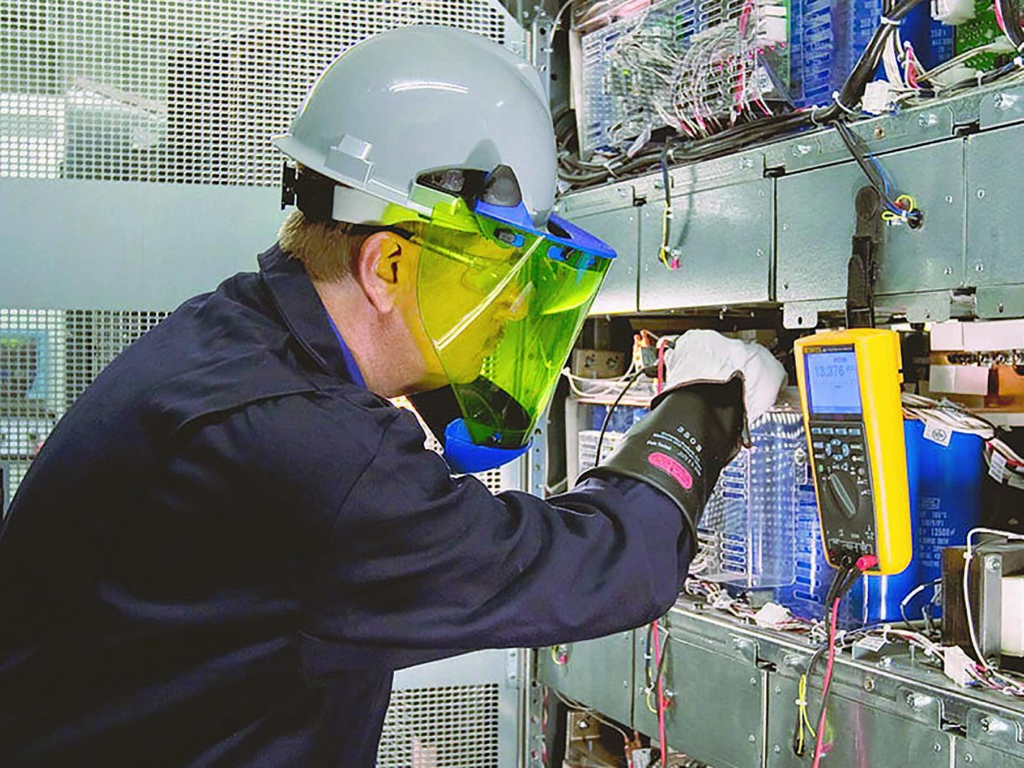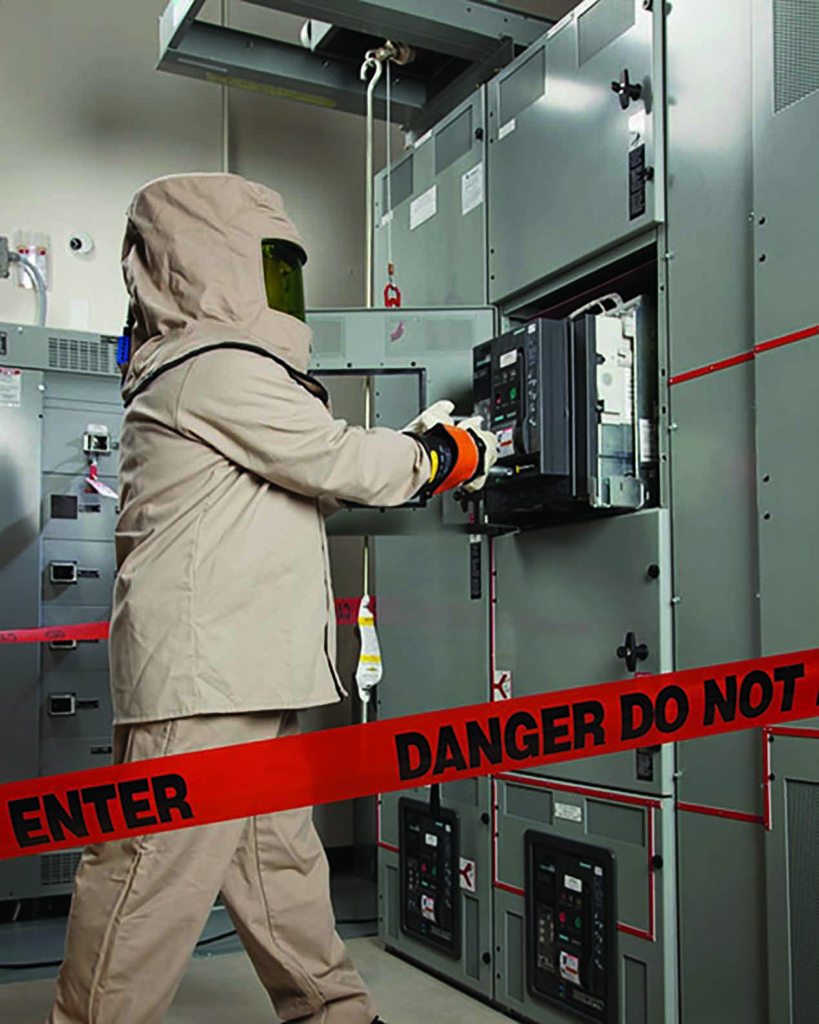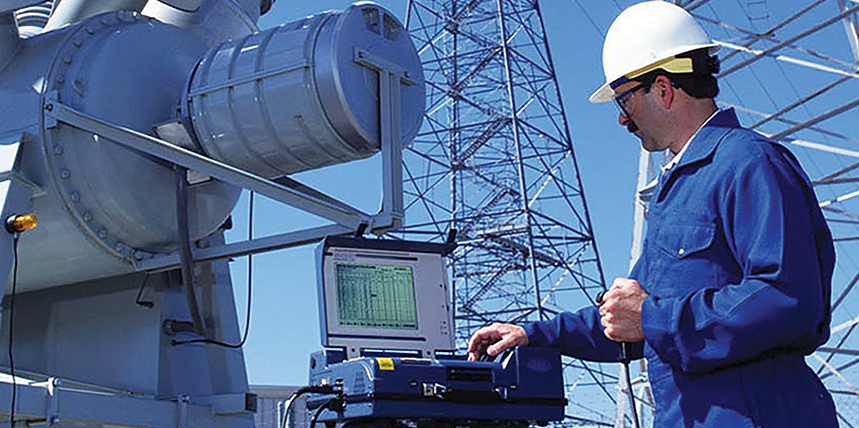Coming up through the ranks in the power industry, I quickly realized I didn’t know what I didn’t know! There are so many facets of the power industry: generation, protection and controls, distribution and delivery, reliability, drives, uninterruptable power supplies, system studies, safety, maintenance, testing, as well as other areas that are vital for the safe and reliable delivery and utilization of electric power. How power is used also varies greatly. The power system in a steel mill is different than one in an automotive assembly plant or a data center or a wind or solar farm. They all may use similar components (cables, circuit breakers, fuses, disconnects, transformers, etc.), but the size and complexity of the systems can be very different. As such, acceptance and maintenance testing requirements and complexity will also vary. This paper focuses on how to ensure electrical maintenance and testing projects are effective and provide the information needed to assess the condition of power system assets.
Establish a Testing and Maintenance Plan
Before discussing project documentation such as test data and reports, an adequate testing and maintenance scope must be established. Many resources can help identify and define which electrical maintenance tasks and testing should be performed on electrical assets. The most frequently referenced sources are the ANSI/NETA ATS-2017, ANSI/NETA MTS-2019, and the National Fire Protection Association’s NFPA 70B, Recommended Practice for Electrical Equipment Maintenance. Another source for testing and maintenance recommendations is the equipment manufacturer’s literature.
With all this information at your fingertips, determining which tests to perform, on what equipment, how often, and how to interpret results might be easy — but not necessarily. Those who have reviewed those documents know it is not that clear and concise. The manufacturer’s literature — while the best and most specific source of recommended maintenance and testing for a given asset — is not always readily available and does not always provide specific recommended practices. NFPA 70B and the ANSI/NETA testing specifications, while based on common practices in the industry and available manufacturer recommendations, do not always agree 100%.
Additionally, while these documents provide a good basis for which maintenance and tests should be performed, they do not cover the details of proper test techniques. They also do not consider the type of power distribution system or the criticality of the equipment. Some systems may include redundant feeds and transformers to increase their reliability and decrease the impact should equipment fail. Equipment supplying power to critical infrastructure may require more maintenance and testing than equipment feeding administrative offices. To ensure an effective testing and maintenance program, the following factors should be considered as you assemble the list and frequency of tests and maintenance tasks to be performed.
- Criticalness of equipment served
- Age of equipment
- Condition of equipment
- Operating environment of equipment
- History of equipment
- System configuration

UPS Maintenance and Data Collection
Businesses operate within a limited budget and can typically only support equipment outages for limited time periods. Therefore, budget and time constraints must be considered when determining which equipment should be tested and what tests and maintenance tasks should be performed.
Testing and maintenance is about risk aversion. The expected level of reliability (or failure) must be established to determine the testing and maintenance scope. When high reliability is required, the system must be designed with adequate redundancy, and certain testing and maintenance tasks must be performed to ensure the proper operation of the primary and redundant system components. If a high level of reliability is required from a system design that lacks sufficient redundancy, additional or more detailed testing and maintenance (time and money) will be required. When considering these important factors and decisions, it is often advantageous for the owner to work with a testing and maintenance service provider to establish a customized scope of work for a testing and maintenance program.
Execute the Project
Once a testing and maintenance program including scope, test specifications, time, and duration has been developed, it is time to release the project for bid, evaluate proposals, and select the best candidate to execute the work. Once a testing firm is selected, the owner must ensure all key requirements of the project specifications are understood to avoid issues during the execution of the project. Any deviations or alterations should be discussed and agreed to before project execution begins. This is the ideal time to ensure all inspection, testing, and maintenance actions are documented and included in the final test report.
Once a larger project begins, times must be established for the owner and the service provider to discuss activities, schedules, and findings. These discussions may not be necessary on smaller projects unless something is discovered that affects the ability to re-energize the system or places the system at risk as a result of deterioration or equipment otherwise not suitable for return to service.
Reliable and accurate documentation of test procedures and test data is vital to an effective testing and maintenance project. Depending on the apparatus and tests being performed, variations of a given test or test procedure may be applied. Some tests or procedures will yield similar and accurate results, while others may not provide the expected results or may include or exclude components that affect the results. The person witnessing the testing should be familiar with the test methods outlined in the project specifications. There are times when shortcuts are permitted due to outage window or other site-specific conditions, but the impact and ramifications of these shortcuts must be understood and approved.
To ensure tests are performed correctly and the test results are accurate, the owner should assign a project manager with a strong background in testing and maintenance to all testing and maintenance projects. If the owner’s project manager does not have a strong background in this field, it may be in the owner’s best interest to hire a third-party project manager.
Document the Project
Reporting and documenting a testing and maintenance project is critical. The test report, which summarizes project activities, test data, analysis, and recommendations, communicates the test results. Other than test stickers, the report is the only evidence that electrical testing was performed.
The test data documentation process must be accurate and reliable. Testers must record values accurately and with minimal errors. Measurement values and units, as well as any observations, must be recorded. The tester’s experience level can make a significant difference in the quality of the project’s documentation. In addition to performing the electrical tests, an experienced tester will carefully examine the apparatus and note any signs of damage, deterioration, excessive wear, excessive heating, etc. These inspections should be clearly documented on the test data sheet. The equipment owner should assume that if the inspections and tests are not documented, they likely did not occur.
During the project, test data must be constantly reviewed by the technician to ensure all test parameters are met and any equipment with concerning test data is immediately identified and brought to the attention of the owner. This is where the guidance of a Level III or Level IV certified technician is required. Senior testers can ensure the data is accurate and make sound recommendations based on their years of experience. When less than acceptable test data is discovered, an immediate retest is often warranted to verify the data and ensure the test data has not been affected by a test method, a test equipment defect, or other external influence. Once the test data is verified, the project lead and owner representative must communicate to determine the best course of action. This frequently does not happen. Topics discussed in these conversations and any recommendations should be included in the project’s formal test report.
The documentation process must involve minimal transcription of information from one source to another to avoid introducing additional errors. If documentation is performed using pencil and paper forms, the report should contain a copy of those same paper forms. Errors are often introduced by transcribing paper forms onto an electronic data form or database. While some testing companies continue to use paper test forms on the project and then input the data into a computer system at a later time, the most accurate and efficient process involves direct input of test data into a reliable database during testing. The key to success in using a data management system is to use standardized forms and a common database where all data can be stored, backed up, mined, and retrieved. This database should not reside solely on a local laptop or office computer; it must be synchronized to a commercial data architecture system with redundancy and regular backup processes to avoid losing the data or placing the data at unnecessary risk of corruption.
Standardized Reporting
While the general format of test reports varies from vendor to vendor, basic sections and content should be included. At a minimum, the report should contain:
- Project summary
- Description of equipment tested
- Description of tests performed
- Protective device settings
- Test data
- Test data analysis, evaluation, and recommendations

Circuit Breaker Maintenance Testing
Within the test data sheets, additional information such as testing organization; clear identification of tested equipment using client names and facility references; pertinent equipment nameplate data; ambient humidity and temperature at time of test at the test location; project date(s); test equipment calibration information and/or dates (if required); person performing the tests; documentation of inspections, test, maintenance, and calibration performed; documentation of as-found and as-left settings and test results; and observations and comments should be included.
Qualifications
Adequate experience and qualifications of the testing firm and testing technicians are of paramount importance. Two U.S. qualification agencies are widely accepted: the InterNational Electrical Testing Association (NETA) and the National Institute for Certification in Engineering Technologies (NICET). NICET and ANSI/NETA have established four test technician certification levels. While large or complex projects may require one or more Level 4 technicians to lead and manage the project, most testing projects can be successfully managed by one or more Level 3 technicians. NETA Level 2 technicians are often capable of performing most testing independently and with little supervision. A Level 1 technician can work as an assistant under the direct guidance and supervision of a more experienced tester.
Qualifications and experience can make a significant difference in the quality and success of an acceptance or maintenance testing project. If the owner wants to know everything possible was done to ensure the reliable operation of their electrical equipment, confirming that the testing company and technicians have adequate qualifications and experience is vital to the accuracy of the results and owner’s peace of mind.
Test technician qualifications are important, but the testing firm must also provide oversight and a thorough review and analysis of the test data. This review typically involves a team of the firm’s subject matter experts not engaged in the testing procedures. The team not directly involved in the testing project usually includes experienced testers, technical writers, and engineers who examine the test data, identify documentation errors, and ensure that any test data not meeting the established project standards is identified. Data not meeting the project standards must be clearly called out in the report, and recommendations for corrective actions should be included.
The test report should provide vital information about the continued reliable operation of the tested electrical equipment. However, it does take time to assemble a comprehensive and accurate report. The delay between performing the testing and issuing the report can be critical if defects or deficiencies are discovered during testing. The owner must ensure that any issues discovered during testing are brought to their attention immediately during the testing phase of the project. This allows the owner time to address any issues while the test team is on site and the equipment is de-energized. If good communication is established during a project testing phase, the test report should not contain any surprises.
Report turnaround time can vary from project to project depending on complexity and size. For large, ongoing projects, periodic reports can be provided on an established schedule (weekly, bi-weekly, monthly) or by progress (completed substation). For smaller projects, reports should be available in a matter of days unless additional test information such as laboratory liquid analysis or other specimen tests must be performed. For medium to larger projects, a turnaround of two weeks is considered reasonable.
Smaller projects may not contain large amounts of complex data or recommendations, but larger projects can contain a mountain of data and recommendations. This amount of data can be overwhelming to review, understand, and digest. For larger projects containing complex testing, the test provider should arrange a follow-up meeting to review the report and outline any critical recommendations or corrective actions. Interpretation and explanation of the data to provide a better understanding is often included during this meeting.
Conclusion
Effective acceptance and maintenance testing of electrical equipment and systems starts by using experienced and qualified testing technicians and testing companies that have established reporting systems and procedures. These procedures dictate:
- Identify data to be evaluated during the testing process.
- Immediately identify assets that are defective or produce concerning test results and bring them to the attention of the owner throughout the project.
- Conduct an internal review process using a knowledgeable and competent team — independent of the test technicians — to ensure all data and recommendations are accurate. This is extremely important to ensure substandard equipment is not unknowingly returned to service.
- Hold a final project review meeting with the owner to present the final report and analysis.
The owner is assured the highest level of confidence if they know that the test data has been accurately recorded, managed, and stored in a database that permits quick recall, trending, and data mining. This data is a key asset for owners as they plan for the most effective condition-based maintenance cycle. It can help them identify equipment reaching end-of-life and plan for system upgrades.
Choosing a service provider with the experience, qualifications, test data management, and established internal review systems outlined in this article has an impact on the cost of the project, but a higher level of system reliability and operational assurance is gained. The old adage, “You get what you pay for,” comes to mind.
 Steve Park, PE, is Director, Engineering and Technical Services at Electrical Reliability Services, a Vertiv company, where he provides expertise and leadership for sales, marketing, training, and operations, serves as the lead technical writer, and conducts technical and commercial seminars for internal and external customers. Steve has over 40 years in management, leadership, and operational experience in the design, maintenance, testing, and engineering of low-, medium-, and high- voltage power systems and apparatus. He is an SME in power system maintenance, management, equipment testing and evaluation, system studies, electrical safe work practices, and medium-voltage cable testing. Steve led two major operational and organizational changes involving extensive change management of operational systems and processes including establishing a unified data collection and management system for over 40 geographically dispersed offices and creating a centralized engineering and technical support department. He is a former Service Center Manager responsible for sales and operations. Steve is a Professional Engineer, a Level 2 Test Technician, and is OSHA 30 qualified. He received his BS and MS in electrical and electronics engineering from Purdue University and an MBA from Indiana Wesleyan University.
Steve Park, PE, is Director, Engineering and Technical Services at Electrical Reliability Services, a Vertiv company, where he provides expertise and leadership for sales, marketing, training, and operations, serves as the lead technical writer, and conducts technical and commercial seminars for internal and external customers. Steve has over 40 years in management, leadership, and operational experience in the design, maintenance, testing, and engineering of low-, medium-, and high- voltage power systems and apparatus. He is an SME in power system maintenance, management, equipment testing and evaluation, system studies, electrical safe work practices, and medium-voltage cable testing. Steve led two major operational and organizational changes involving extensive change management of operational systems and processes including establishing a unified data collection and management system for over 40 geographically dispersed offices and creating a centralized engineering and technical support department. He is a former Service Center Manager responsible for sales and operations. Steve is a Professional Engineer, a Level 2 Test Technician, and is OSHA 30 qualified. He received his BS and MS in electrical and electronics engineering from Purdue University and an MBA from Indiana Wesleyan University.
